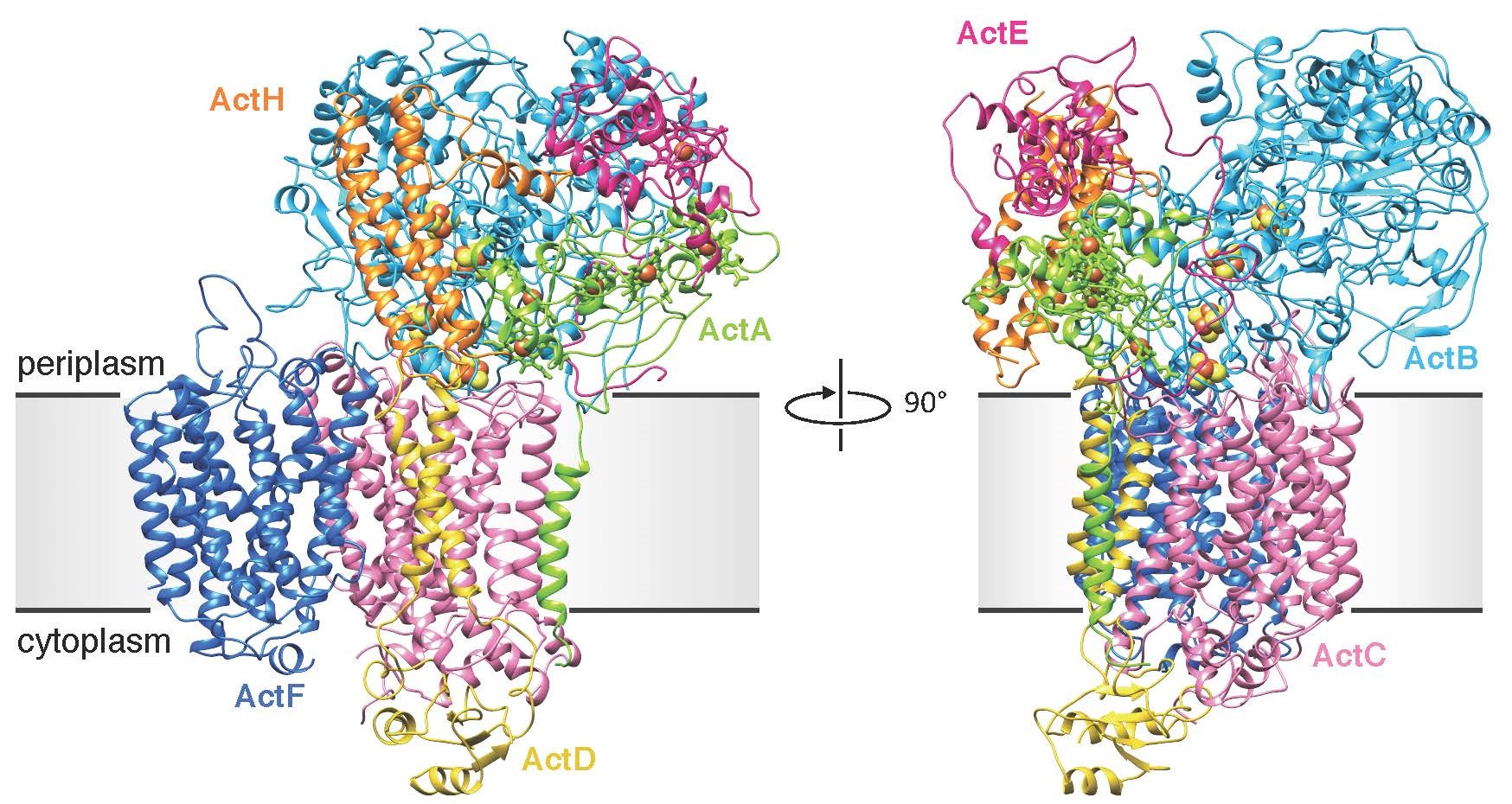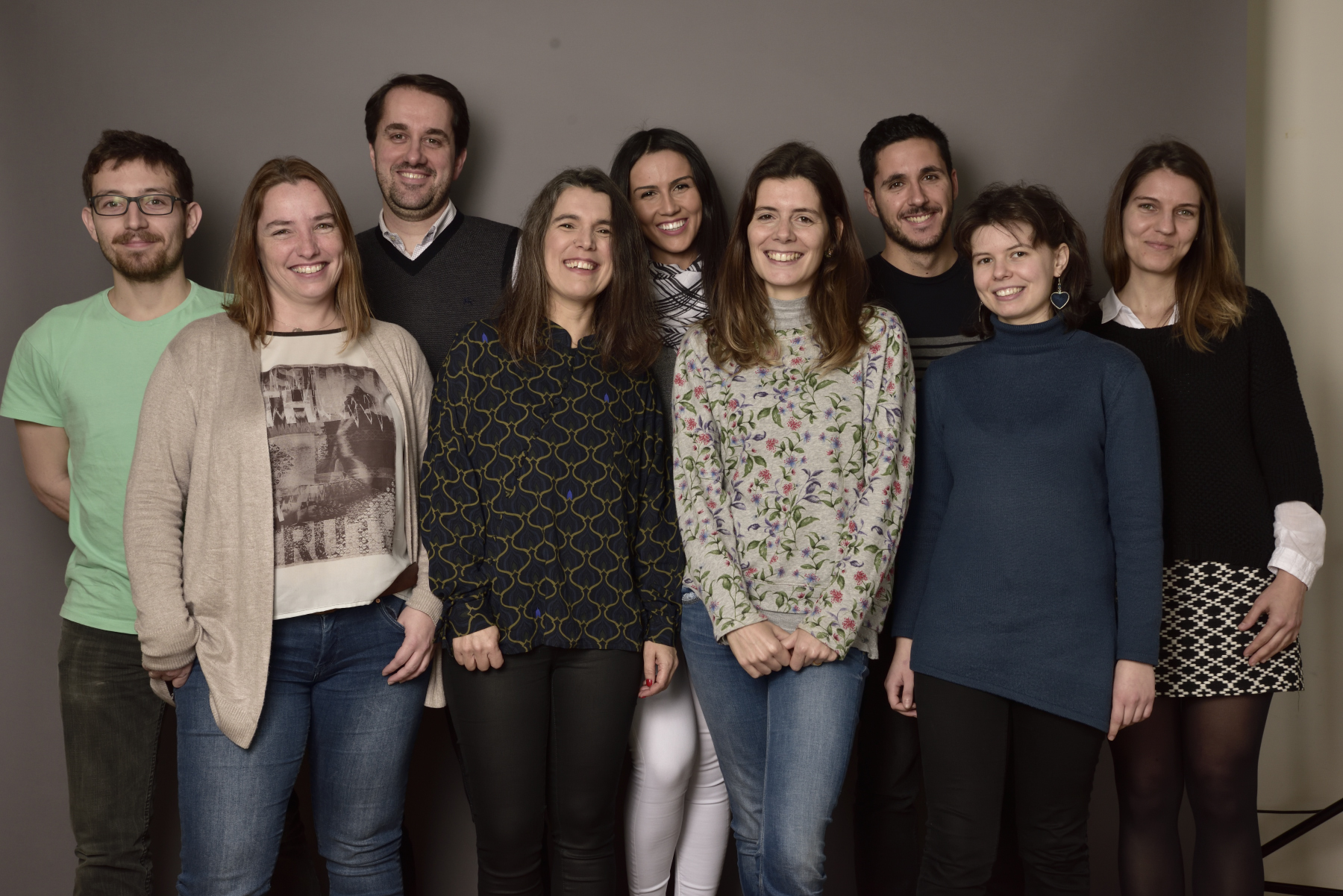Breathing underwater
Oeiras, 3.05.2018
Energy is the basis of life, and all organisms depend on mechanisms of energy transformation for growth and reproduction. Living beings get their energy through cellular respiration. In eukaryotes, like us humans, this is done in the presence of oxygen in an organelle called the mitochondria through four protein complexes, which constitute the respiratory chain. Bacteria have more diverse protein complexes and they are able to use other compounds besides oxygen, such as sulfur and nitrogen species or iron. This diversity is what enables microorganisms to colonize environments as extreme as volcanoes, the bottom of the ocean or the inside of our bowls. In this work, ITQB NOVA researchers from Manuela Pereira Lab and Miguel Teixeira Lab with colleagues from Max Planck Institute in Germany have described a new bacterial respiratory complex from a deep see organism. The results were published this week in Nature Communications, open access magazine from Nature Publishing group.

Overall structure of bacterial respiratory complex of Rhodothermus marinus, alternative complex III
Rhodothermus marinus is a thermophile collected from Azores, at Ribeira Quente Beach. It grows at 65 °C but it also needs oxygen, so it colonizes a thin layer of sea water where it finds optimal temperature and oxygen pressure. This bacterium has been studied at ITQB NOVA, at Manuela Pereira Lab and Miguel Teixeira Lab, for many years. Now, they were able to take a big advancement by obtaining a cryo-electron microscopy image of the membrane protein complex that is responsible for energy transduction in these bacteria. Cryo-electron microscopy for the high-resolution structure determination of biomolecules in solution is the technique that awarded the Nobel Chemistry Prize to Joachim Frank, Richard Henderson and Jacques Dubochet in 2017. In fact, the results now obtained gave fundamental structural information to understand how this “molecular machine” transforms energy into the usable ATP. (more on the Portuguese consortium that is is committed in bringing this technique to Portugal to make it more available for researchers).
“In this work we have described a new respiratory alternative complex, that is increasing the knowledge we have on the great diversity of microorganisms molecular strategies for life and reproduction”, according to Manuela Pereira, corresponding author. “Rhodothermus marinus presents a unique structure, which provides insights into a mechanism for energy transduction and introduces ACIII as a redox-driven proton pump.”

The team at Manuela M. Pereira Lab - Biological Energy Transduction
Metalloproteins and Bioenergetics Unit
Original paper
Nature communications DOI: 10.1038/s41467-018-04141-8
Structural basis for energy transduction by respiratory alternative complex III
Joana S. Sousa, Filipa Calisto, Julian D. Langer, Deryck J. Mills, Patrícia N. Refojo, Miguel Teixeira, Werner Kühlbrandt, Janet Vonck* & Manuela M. Pereira*
In the media
- Thermophile respiratory complex's structure determined by cryoEM, Physorg, 30.04.2018
- Bactéria açoriana respira de forma única, Revista Visão, 3.05.2018
- Uma bactéria das fontes termais açorianas que respira oxigénio, Observador, 3.05.2018
-
Bactérias que respiram no fundo do mar dos Açores, Elvas News, 4.05.2018
-
Cientistas portugueses desvendam respiração de bactéria do fundo do mar dos açores, i9 Magazine, 5.05.2018
-
Cientistas portugueses desvendam segredos da bactéria que respira no fundo do mar dos Açores, Sul informação, 6.05.2018
-
Bactérias que respiram no fundo do mar dos Açores, AuriNegra, 7.05.2018
-
Cientistas portugueses desvendam respiração de bactéria do fundo do mar dos açores, OeirasInvest, 7.05.2018
-
Bactérias que respiram no fundo do mar dos Açores, Notícias do Nordeste, 11.05.2018
-
Bactéria da Ribeira Quente pode interessar à indústria, RTP Açores, 14.05.2018







